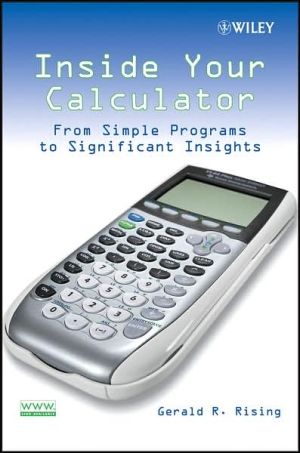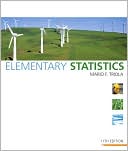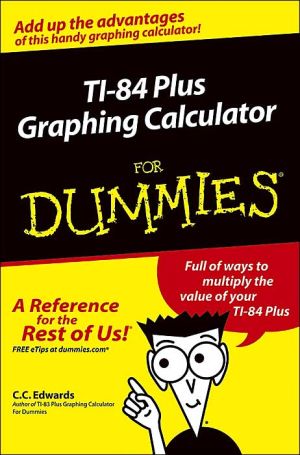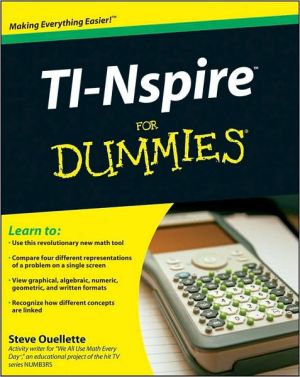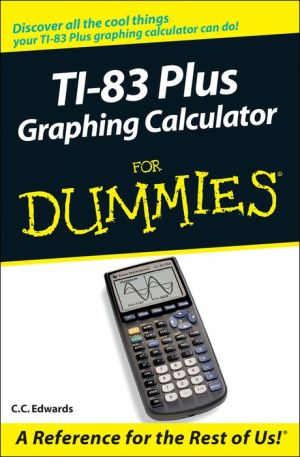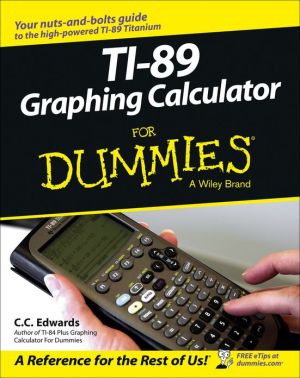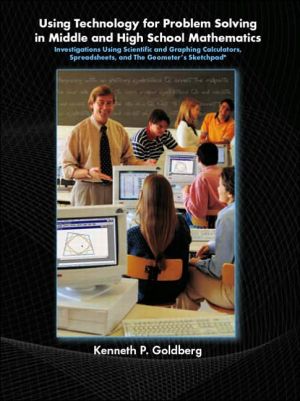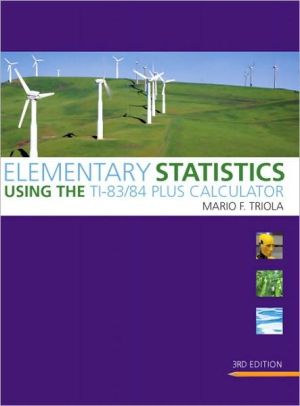Inside Your Calculator: From Simple Programs to Significant Insights
Uncover the mysteries that lie within your calculator\ This remarkable book explores the simple internal calculator processes—algorithms and programs—that tell us, for example, that the cosine of 56? is 0.5591929035. Using carefully constructed diagrams and figures, the author effectively demonstrates how calculator keys compute powers, roots, logarithms, and trigonometry functions, while also providing insights into simple programming, the conversion between decimal and binary numeration,...
Search in google:
Uncover the mysteries that lie within your calculatorThis remarkable book explores the simple internal calculator processes—algorithms and programs—that tell us, for example, that the cosine of 56? is 0.5591929035. Using carefully constructed diagrams and figures, the author effectively demonstrates how calculator keys compute powers, roots, logarithms, and trigonometry functions, while also providing insights into simple programming, the conversion between decimal and binary numeration, and perhaps most importantly, the structure of our numeration systems. Many people believe that the processes that drive calculators demand advanced mathematical concepts; however, this book proves that a minimal understanding of algebra and geometry is all that is needed to follow the step-by-step explanations of how scientific calculators work.Inside Your Calculator: From Simple Programs to Significant Insights is a complete and multifaceted exercise in critical thinking. This book features:A detailed explanation of how to use a graphics calculator and program basic functionsA discussion of the history of mathematics when appropriate, which provides a foundation for further learningFundamental mathematical lessons and interesting applications of pre-calculus mathematicsA thorough review of the fundamentals of programming, algebra, and geometry needed to gain insight into why the algorithms work and how the results are meaningful in our livesWhile the simultaneous use of a calculator is not needed to gain insight into how the algorithms work, those who do have a programmable graphics calculator can experiment with the programs presented in the book. These programs may be used on TI-84 and TI-83 calculators, and additional information for other Texas Instruments calculators as well as the Casio FX series is available on the book's related web site.As a result of over fifty years of award-winning teaching experience in both high school and college classrooms, Dr. Rising anticipates and answers potential questions from readers, and he successfully brings this subject alive in an illuminating and entertaining way. This book is therefore not only ideal for undergraduate mathematics majors as either a primary or supplemental text, but it also appeals to anyone with an interest in mathematics and its ideas.
Preface. PART I: THE SETTING. 1. Introduction. PART II: ALGORITHMS AND PROGRAMS. 2. Numbers, Algorithms and Programs. 3. Integer Powers. 4. Square Root. 5. Rational Powers. 6. Logarithms. 7. Archimedes' Calculation of π. 8. Calculating Trigonometric Functions. 9. CORDIC Calculation of Cosine. PART III: DISPLAYING INFORMATION. 10. Graphing. APPENDIXES. A. A Primer on Programming. B. Interpolation. C. Pre-Electronic Calculation Tools. D. Fermat's Last Theorem. E. An Extension and an Application of Integer Division. F. Binary Arithmetic. G. Binary Subtraction. H. The Rapid Convergence of Newton's Method. I. How Newton's Method Applies to the Square Root Algorithm and the Rth Root of N. J. The Ancient Greeks Approximate Square Root of 2. K. Continued Fraction Approximations. L. Multiplying Numbers with Many Digits. M. Finding Equation Roots by Binary Search. N. Derivation of the Logarithm Change of Base Formula. O. The Ratio of Decimal to Binary Digits. P. Constructing a Log Table. Q. Relations between Sides of Inscribed and Circumscribed Polygons. R. Change in Form of a Polygon Formula. S. An Area Approach to Archimedes' Problem. Further Reading: A Personal Selection. Index.
\ From the Publisher"This book would appeal to many readers who have a minimum background in mathematics and/or programming." (CHOICE, January 2008)\ "People who want to know how things work will enjoy this book…" (Journal of Recreational Mathematics)\ "I recommend this book for anyone who has…an interest in understanding how calculators work or in programming calculators." (Mathematics Teacher, February 2008)\ "A book on algorithms for scientific pocket calculators that is written with much dedication." (Zentralblatt MATH, 2008)\ \ \
